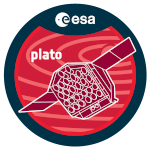Gamma Dor stars have a convective core, a radiative envelope as well as a convective superficial envelope. Those stars are usually moderate to fast rotators and are known to oscillate according to gravito-inertial modes that are generally well described by the so-called traditional approximation of rotation (TAR). However, pure inertial modes may propagate in their convective core, which is not predicted by the TAR. Theoretical models predict that these inertial modes trapped within the core can couple with gravito-inertial modes in the radiative zone (Ouazzani et al 2020). These mixed modes create dips in the regular period spacings of series of modes with same degree and azimuthal order. Such dips have been already detected in some rapidly rotating Gamma Dor stars observed by Kepler (Ouazzani et al 2020, Saio et al. 2021). Our work aims to characterize this coupling, especially how these dips depend on various stellar properties, starting with the rotation rate Ω of the convective core. To completely take into account the effect of rotation on oscillations, we compute modes with the TOP code (Two-dimensional Oscillation Program). Oscillation spectra are dense in the considered frequency ranges making the numerical problem difficult: we first needed to develop tools to recover interesting series of modes among a dense forest of small-scale, or even unresolved, modes. We also carefully quantify the precision of frequencies we have reached. For this study, we extensively analyzed zonal and prograde l=2 modes and prograde l=1 modes. We find dips around the spin parameter (s=2Ω/ν) corresponding to inertial modes of the convective core alone, as expected in Ouazzani et al (2020). We show that those dips vary in depth and width depending on the rotation of the star. In particular, dips are more spread when the rotation rate increases. We then compared our computation to the theorical model proposed by Tokuno & Takata (2022). This study offers the opportunity to develop new seismic diagnosis to probe the rotation and the structure of the convective core of gamma Dor stars.

 PDF version
PDF version
